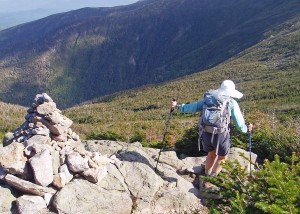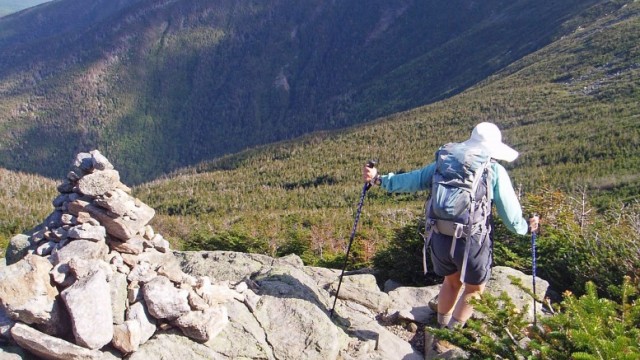
Tim G. from Connecticut wrote recently to ask about summer backpacks and sleeping bags:
“I enjoyed your recent camping article and was wondering what you would recommend for a 3-season sleeping bag and a backpack for multiple day outings. I have looked at or seen reviews on the Gregory Baltoro 70, Jansport Klamath 68, Osprey Exos 58 or Aether 70 and some REI backpacks. On sleeping bags, I have seen the EMS Velocity 30 Degree bag at EMS and not much else. Thanks for your help.”
Well, Tim, I don’t know how much help I can be, because I’ve never actually used any of those packs—though I have used gear from each and every one of those suppliers. In fact, for winter camping I currently use an Argon 110 from Osprey (www.ospreypacks.com). This HUGE pack is simply the best I have ever found for comfortably carrying heavy, bulky loads.
My basic pack for 3-season backpacking is the excellent and affordable Mars 85 from REI (www.rei.com). My sweetheart Marilyn carries the Venus 75 women’s version of the same pack.
And for light, fast overnights and weekends I use a Z-65 from Gregory (www.gregorypacks.com). Marilyn has the Jade 60 women’s version. These also double as our winter daypacks for snowshoeing and cross-country skiing and for tackling high summits in the summer.
That doesn’t mean those are the best packs on the market. They just happen to fit me and my needs—and they went on sale when I could afford them . . . If price is an issue, the house brands from EMS (www.ems.com), REI and L.L. Bean (www.llbean.com) tend to be well built, somewhat heavier and, usually less money than the “name” brands.
For decades I carried big packs from Kelty (www.kelty.com), Mountainsmith (www.mountainsith.com), and Jansport (www.jansport.com) and a smaller pack from EMS. I still have all of those and lend them out to my kids and to friends as needed. Good packs can last a long time.
One piece of advice I would give to anyone looking to buy a pack: get one big enough. Yes, bigger packs are heavier and they tempt you to carry more, but there’s nothing more frustrating than not being able to fit what you need in or on your pack. The packs Tim G mentions are perfect for a real go-light backpacker, but I prefer something in the 80 to 90-liter (4,900-5500 cu. in) range for multi-night 3-season backpacking trips. In winter, there’s no such thing as a pack that’s “too big.”
The sleeping bag question is a little more difficult. Sleeping bags have to fit you and there are choices to be made in insulation and warmth ratings.
Personally, I prefer synthetic fill. It’s cheaper and stays warm if it gets wet, but it is heavier. The EMS bag Tim mentions is a good one, very narrow. I like that – other people don’t. The North Face Equinox 35 (www.northface.com) and the Mountain Hardwear Ultralamina 32 (www.mountainhardwear.com) are in the same weight range, but a little roomier. My buddy David Shedd has the Mountain Hardware bag a swears by it. My summer bag is a Klickitat 40 by Coleman (www.coleman.com), which weighs just 2 pounds. .
Personally, for real 3-season use, I like a bit warmer bag—with a rating around 20-25 degrees like the REI Aura 25. None of the 3-season sleeping bags I use are made anymore.
Good gear is an investment, find stuff you like. And remember, the more you use it the less it costs per use. Life isn’t a spectator sport. Get out and enjoy!


